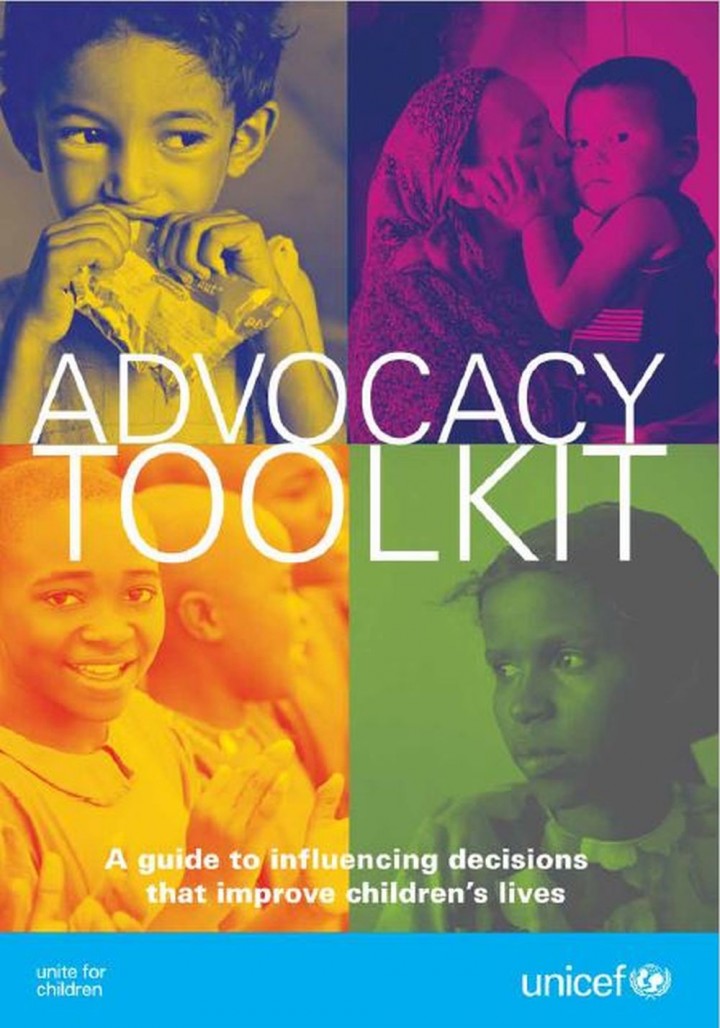Advocacy Toolkit - A guide to influencing decisions that improve children's lives
Cohen, D. et al. (2010)

Published in: 2010
Pages: 144
Publisher:
United Nations Children’s Fund (UNICEF)
Author:
Cohen, D. et al.
Uploaded by:
SuSanA Admin
Partner profile:
common upload
8959 Views
869 Downloads
UNICEF has an exceptional history of advocating to protect and promote children’s and women’s rights. The Advocacy Toolkit stems from this, systematizing and coordinating both internal and external advocacy expertise, as well developing a few innovative approaches. The Toolkit provides a set of practical tools to help UNICEF staff and Partners in the development and management of their advocacy work.
The Advocacy Toolkit is applicable for all levels of the organization as a resource for building a structured approach for sustained advocacy. The tools are particularly relevant for UNICEF country offices and national committees, but its content will also be valuable to anyone who wants to expand their understanding of the human rights-based approach to advocacy and how this approach is applied.
The Advocacy Toolkit provides a broadly accepted definition of advocacy and underscores UNICEF’s unique position and experience in advocacy. The heart of the Toolkit provides detailed steps, guidance and tools for developing and implementing an advocacy strategy. The Toolkit also outlines eight foundational areas that can help strengthen an office’s capacity for advocacy, and covers several crosscutting aspects of advocacy including monitoring and evaluating advocacy, managing knowledge in advocacy, managing risks in advocacy, building relationships and securing partnerships for advocacy, and working with children and young people in advocacy. Special focuses examine a variety of specific topics, including human rights and equity approaches to advocacy, theories of change, and conducting advocacy in humanitarian situations.
While navigating this Toolkit, it is important to remember that these are only one set of potentially useful tools, and that there is not one particular approach or method that should be ascribed to advocacy in UNICEF. Rather the aim is to provide readers with ideas for creating their own advocacy initiative, based on the reality in the Environment in which they operate. Furthermore, although this Toolkit is ideally examined in the sequence it is written, it has been designed so that users can quickly navigate to particular tools in which they are most interested, and use them as they see fit.
Bibliographic information
Cohen, D. et al. (2010). Advocacy Toolkit - A guide to influencing decisions that improve children's lives. United Nations Children’s Fund (UNICEF)
Filter tags
English Politicians and local decision makers Practitioners Public awareness, advocacy and civil society engagement (WG9)














